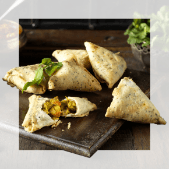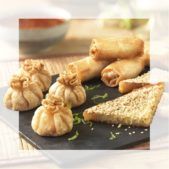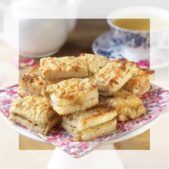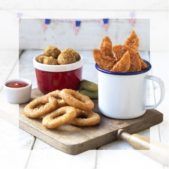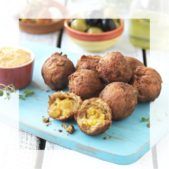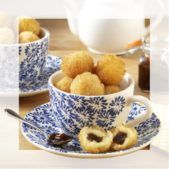We don’t know about you, but here in the SK kitchen we can’t get past 12.25pm without a childhood memory returning.
That’s when the school bell would ring for the end of morning lessons and the lunchbreak began.
Fabulous, a chance to stop looking for x in a never ending algebra rabbit hole and instead enjoy some playground footy or netball, catch up with pals and, of course, sample the delights of the school dining hall.
The quality of school meals remains a matter for debate despite 230 years of trying to get it right. School Meals Week is a good time to focus on this most important time of the day for students.
The Physicist Benjamin Thompson is credited as the first person to come up with the idea in 1890 during his time in Germany. He ran a Poor Peoples Institute in Munich making uniforms for the German Army. As was commonplace in those times children worked alongside adults but for part of the day were taught reading, writing and arithmetic and given a meal.
Thompson would later open a soup kitchen in London feeding 60,000 people a day and invented kitchen equipment including large scale ovens which were the forerunners of those used in schools today.
In Britain Free school meals for all were introduced after the second world war but the cost proved too great and so a charge was introduced for those deemed wealthy enough to afford it.
An increasing awareness of the benefits a nutritionally balanced diet can bring to education led to increasing concerns about the high fat and sugar content of school meals.
The Medical Research Council suggested that, despite rationing, schoolchildren received healthier school meals in 1950 than they did in 1990.
Increasingly parents have turned to the option of providing packed lunches and now about 50% of school children take in their own food. As well as helping to ensure that a child’s individual allergy or food intolerance is catered for, the school lunchbox also allows a boost to the day when an unexpected treat is included.
We couldn’t end this school meals week blog without a nod to a classic school meal, although you need to be of a certain age to understand. If we say pink custard and it makes you smile, then you were part of this special group who savoured such a thing – just imagine the additives which went into it back then! Our version is obviously much better for you, honest!
Mince and dumplings and cake with pink custard
For the mince and dumplings:
- 2 tbsp sunflower oil
- 1 onion thinly sliced
- 2 garlic cloves, finely chopped
- 2 celery sticks, finely sliced
- 2 medium carrots, diced
- 500g/1lb 2oz lean beef steak mince
- 1 x 400g/14oz can chopped tomatoes
- 2 tbsp tomato puree
- 350ml beef stock
- 150ml red wine
- Pinch of sugar
- 1 bay leaf
- salt and freshly ground black pepper
- 250g self-raising flour plus extra for rolling
- 125g shredded beef suet
- Punch of salt
- 2 tbsp chopped fresh parsley
For the cake and custard:
- 280g butter
- 280g caster sugar
- 5 eggs
- 280g self-raising flour
- 300g icing sugar
- Few teaspoons of boiling water
- Sprinkles to decorate
- 250ml double cream
- 500ml whole milk
- 50g golden caster sugar
- 6 large egg yolks
- 125ml raspberry coulis
Mince and dumplings recipe:
- Heat the oil in a large saucepan or flameproof casserole and cook the onion, garlic, celery and carrots for 15 minutes, stirring occasionally until soft and pale golden-brown.
- Add the mince and cook for a further five minutes.
- Add the tomatoes, tomato purée, beef stock, red wine, sugar and bay leaf. Add a good pinch of salt and freshly ground black pepper. Bring to the boil, then reduce the heat and simmer gently for 20 minutes, stirring occasionally.
- For the dumplings, put the flour in a bowl and stir in the suet, salt and parsley. Make a well in the centre and add enough cold water – you’ll need around 200ml/7fl oz – to mix to a soft, spongy dough. Use lightly floured hands to roll into 12 small balls.
- Place the dumplings carefully on top of the mince. Cover with a tight-fitting lid and cook over a medium heat for 18-20 minutes, or until the dumplings are cooked through and well risen.
Cake recipe:
- Pre-heat your oven to 180°c (160°c for fan assisted oven or Gas Mark 4) and a 9″x12″ inch baking tin with greaseproof paper. Set aside.
- In a large bowl, cream together the butter and sugar until light and fluffy.
- Add the eggs one at time, ensuring each is mixed through before adding the next.
- Sift in the flour and gently fold to create a batter.
- Transfer the batter to your pre-lined tin and bake in your pre-heated oven for 50-60 minutes until risen, golden and a skewer inserted comes out clean.
- Leave to cool in the tin for a few minutes before transferring to a wire rack to cool completely.
- Once your cake has cooled completely; in a bowl, mix the icing sugar with a few teaspoons of boiling water, adding a little water at time until you have a thick pouring consistency. Pour the icing onto your cake, using a spoon to guide it to the edges. Finish with some rainbow sprinkles.
Custard recipe:
- Combine the cream and milk in a saucepan. Bring to a simmer then remove from the heat.
- In a large bowl, whisk together the sugar and egg yolks, until the mixture has gone pale in colour and doubled in size.
- Temper hot milky mixture into the sugar yolk mixture, by slowly adding hot milky mixture about 60ml (1/4 cup) at a time, whisking to distribute heat. Once half of the milky mixture has been added, transfer mixture back into the saucepan with the remaining milky mixture.
- Place the saucepan over low heat.
- Stir continuously while adding the raspberry coulis.
- Continue stirring until the mixture reaches or 80°C (180°F)
- Remove from the heat and cool, then enjoy!
